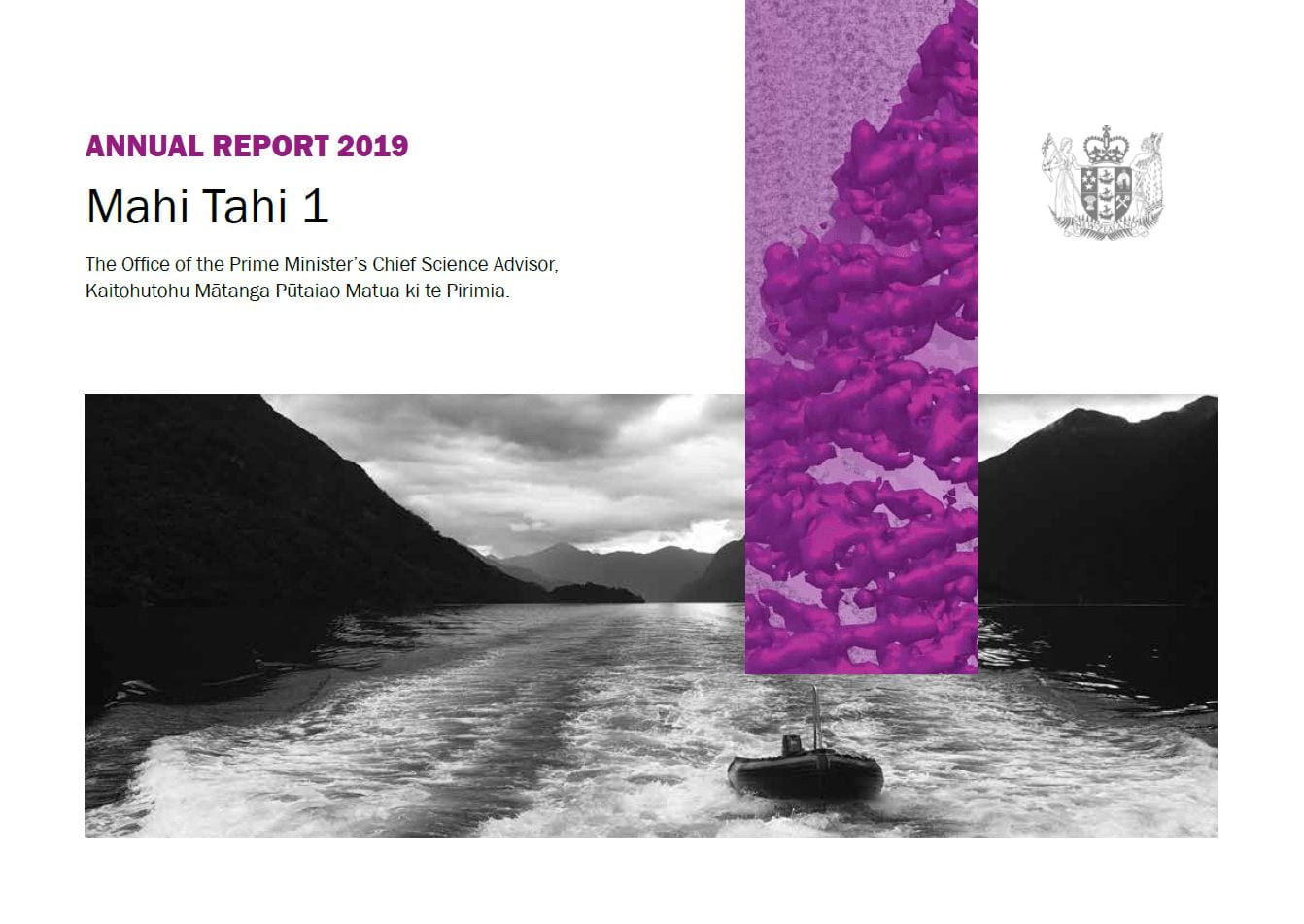Kia ora koutou
Where did that year go? I’ve now been in the role for a whole year, and our first annual report, Mahi Tahi 1, is at the printers. If you would like a hard copy or a high resolution version – get in touch.
Download Mahi Tahi 1 – Annual Report 2019 (PDF, 1.91MB)
It has been a whirlwind year: building the team, setting up new offices, listening to researchers and policy makers, agreeing a work plan with the Prime Minister, and delivering our first briefings and advice to the Prime Minister and Cabinet.
It is now ten years since this position was first established in Aotearoa New Zealand, making it a good time to reflect on the role and the science advisory network more widely, to build on the solid platform of Sir Peter Gluckman’s legacy, and set the course and culture for the years ahead. I decided early on to embed four principles deeply into all our activities: rigour, accessibility, transparency and inclusivity.
With these front of mind, I invested a lot of time travelling around the country in my first 100 days, listening keenly both to the research community and to government, to see how best to position the Office as a trusted, accessible bridge between the two in the years ahead.
It was clear that these four principles, adopted from a Nature paper in June last year would connect well to the international community but needed particular interpretation in the context of Aotearoa New Zealand. ‘Inclusive’ is perhaps the principle that has generated the most energy. Being the first woman in any role adds a certain additional responsibility to carry the gender flag, which I am more than happy to do. Beyond this though, I am passionate about reflecting on what we have learned along the ‘Women in Science’ pathway and use this knowledge as we broaden the agenda to focus on increasing equity, diversity and inclusion for all underrepresented groups. To this end, I am hugely grateful to the very many people who have supported me in ensuring that our work is as inclusive as possible – especially those from the Māori community who have connected with our efforts in this space, and been patient with me as I embarked on my te reo journey. There is a harder, longer path ahead to build a working partnership around science advice that is truly bicultural, but I have enjoyed and valued the many kōrero this year as we begin this mahi. I hope that we have made some sound first steps as we learn to weave different ways of knowing and understanding together and embrace the strength that comes from each world view. Mā te mahi tahi ka ea ngā mahi katoa.
My listening tour surfaced many ideas, and a surprising consensus in terms of the main themes where government policy could be strengthened by a sound evidence base. These ideas were discussed and prioritised with the Prime Minister in October, and the first cab off the rank is a major commissioned report on plastics. Our #RethinkPlastic project is now well underway, and the first part has been delivered in draft form to the Prime Minister and Hon Eugenie Sage, Minister for Conservation, in order to meet the policy timeline. This has been a very satisfying topic to work on, with so many people keen to engage from within and beyond the research community, and we look forward to delivering the final comprehensive report later this year.
It is always dangerous to choose highlights, especially so in a year where I have been enormously privileged to meet scientists doing amazing work in some spectacular settings. One of the most memorable was a trip aboard the NASA SOFIA flight, to see the infrared telescope at work in the stratosphere (and a fortuitous Aurora Australis). I also went to Antarctica, along with Hon James Shaw, Minister of Climate Change, as the guest of Antarctica New Zealand. This was definitely a ‘bucket list’ moment, but also an opportunity to connect with some Kiwi scientists doing extraordinary work in some of the most remote locations on earth. I have huge admiration for their tenacity and resilience, working hard to understand the ice and the ecosystem, and to understand how our changing climate will impact on this incredible landscape.
Another hat tip to the conservation work done by the Department of Conservation, who were generous enough to let me accompany them on a kākāpō release in Fiordland. It has been a record-breaking year for this unique bird, and it would not have been possible without the tireless staff and volunteers nurturing each chick to maturity.
Finally, I’d like to acknowledge all the warm support I’ve received from researchers, government officials and the wider public as we have embarked on our work, and the Prime Minister for giving me this amazing opportunity.
Ngā mihi nui


